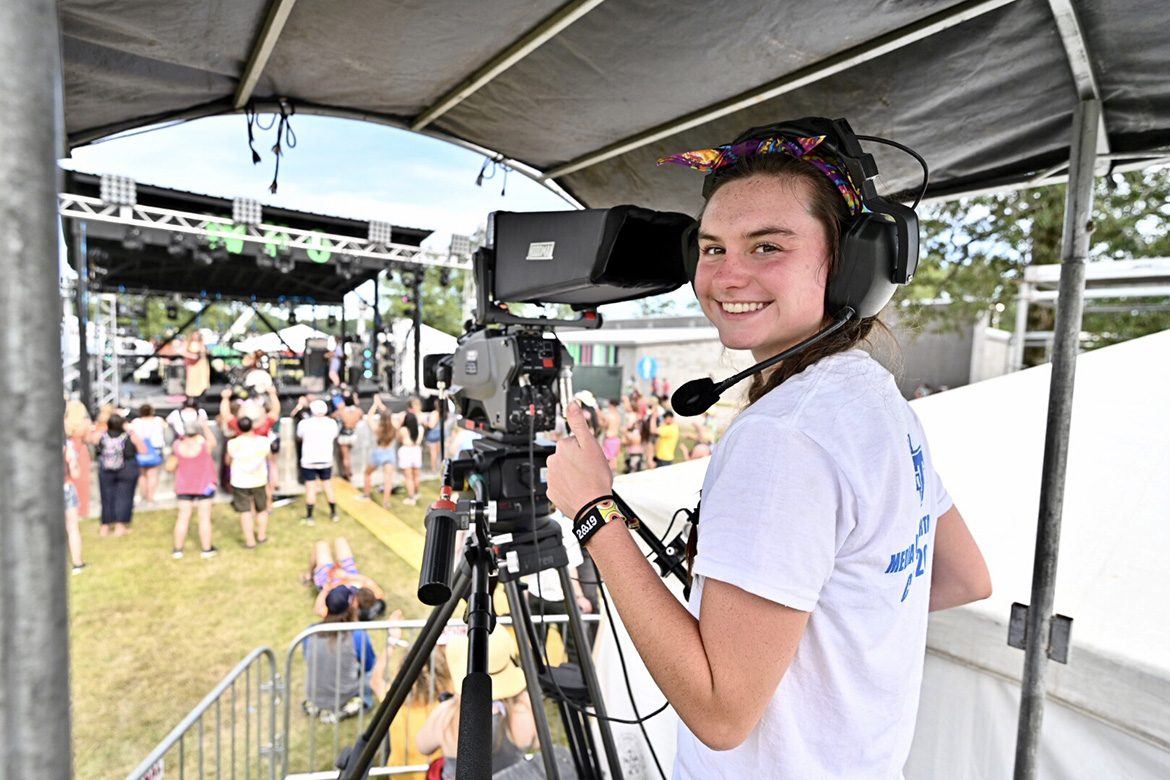
The College of Media and Entertainment is the only college of its kind in the world, offering the full range of media that informs, engages and entertains us.
Our students go on to become:
- Recording Engineers
- Music Business Professionals
- TV and Radio Producers
- Journalists
- Filmmakers
- Public Relations Professionals
- Animators
…and many more dynamic roles.
We have three academic units: the Department of Media Arts, the School of Journalism and Strategic Media, and the Department of Recording Industry.
The School of Journalism & Strategic Media
The School of Journalism & Strategic Media is a nationally accredited program rated in the top 6% among all US college and university programs. Students develop skills through access to the latest technology and excel in journalism, sports media, video storytelling, public relations, advertising, social media and much more.
Department of Media Arts
Media Arts is largest, longest-running, and most comprehensive creative media production program in the state and the region. Media Arts covers filmmaking, television & video, animation, interactive media, photography and media business. The department offers hands-on experience with great facilities and a wide range of career-making student opportunities.
Department of Recording Industry
As the first and largest collegiate recording program in the United States, the Department of Recording Industry is a Signature Program of the university, drawing students from around the globe. Our graduates have won more than 25 Grammy Awards over the past ten years, and the program was noted as one of the best in the country by Billboard, The Hollywood Reporter, and Rolling Stone for the last seven years in a row.
Centers and Facilities
- On the second floor, the building houses the John Seigenthaler Chair of Excellence in First Amendment studies, named for award-winning journalist John Seigenthaler, former editor of the Tennessean and one of the founding editors of USA Today.
- The College is also home to the Free Speech Center which focuses on educating people on the first First Amendment.
- Bragg also houses the Baldwin Photographic Gallery which features rotating exhibits from international photographers as well as our own student capstone exhibitions.
- The Center for Popular Music is the largest, oldest, and most prestigious archive for research on popular music in the world. It holds more than one million items in its collections, which are used by students, faculty and scholars from around the world. Many items are rare and unique, and date from the 1720s to today.
- Our Center for Innovation in Media opened in January 2012. This $700,000 state-of-the-art Center is the home of the 100,000 watt National Public Radio station, WMOT-FM Americana station, and the fastest- growing station in Middle Tennessee. Our students and radio professionals work closely together on programming; student-run WMTS-FM radio; student newspaper Sidelines; student-operated cable television station True Blue TV and student record label Match Records.
- Through a generous donation from country music superstar Chris Young, CME has a its own entertainment venue in the Chris Young Café, located in the Woodmore building next to the new Science Building. Our students book, crew and film concerts from local artists as well as have many local events in the space.


Leave a comment